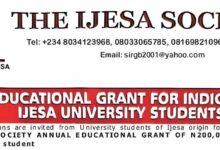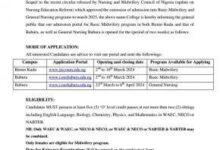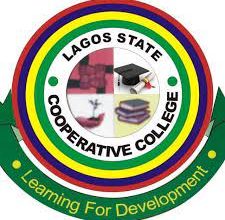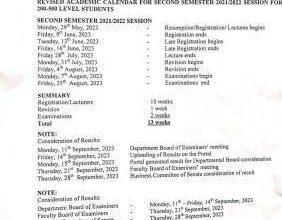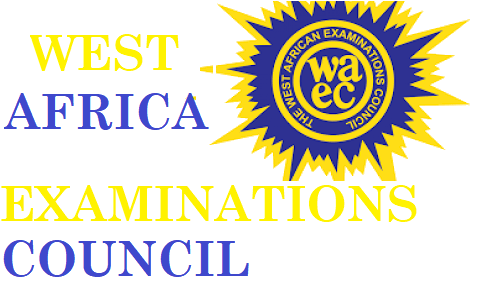
WAEC Syllabus for General Knowledge -In –Art
WAEC Syllabus for General Knowledge -In –Art. WAEC Syllabus for General Knowledge -In –Art is available for all candidates who want to participate in the examination. The West African examination council (WAEC) has officially introduced a syllabus that will guide all the WAEC candidates who wish to write the WAEC examination this year. For a very successful WAEC General Knowledge -In –Art examination for this year, you need to check out the available areas of concentration. It has been divided into sections with chapters, followed by the topics to be covered in preparation for the exams. In the WAEC Syllabus for General Knowledge -In –Art, you will also see the format of how the WAEC General Knowledge -In –Art questions will be presented. Jamb form
There are always 3 sections to answer questions from. Paper 1 is objective questions, paper 2 is essay questions and paper 3 contains drawing and designs. Where paper one (1) carries 50 minutes for 40 marks (2) carries 1 hour 30 minutes for 60 marks while paper three (3) carries 100 marks for 6 hours – part A & B 50 marks/3hours each. WAEC Syllabus for General Knowledge -In –Art. Waec Result
👉 Relocate to Canada Today!
Live, Study and Work in Canada. No Payment is Required! Hurry Now click here to Apply >> Immigrate to Canada
This WAEC syllabus is for both the O’level WAEC and General Certificate Examination (GCE) candidates. Final year students in the senior secondary school level and external candidates are eligible to make use of this syllabus and prepare ahead of the examination. Dollar to Naira Rate
See the full detailed information concerning the WAEC General Knowledge -In –Art Syllabus below.
PREAMBLE
The syllabus is intended to provide candidates with the opportunity to demonstrate the extent of their aesthetic awareness, emotional and visual development through perceptual and creative activities.
OBJECTIVES
Candidates should be able to respond to questions that seek to evaluate their:
(i) Development of perceptual, analytical and expressive skills through a variety of art activities relating to the environment.
(ii) Knowledge and skills in the use and maintenance of art tools, equipment and materials.
(iii) Level of appreciation of values and qualities of different works of art.
👉 Relocate to Canada Today!
Live, Study and Work in Canada. No Payment is Required! Hurry Now click here to Apply >> Immigrate to Canada(iv) Knowledge and application of design elements and principles.
(v) Knowledge of art history and art structure.
(vi) Knowledge and appreciation of their culture in relation to other cultures.
(vii) Understanding of the meaning, significance and role of art in the socio-economic development of their society.
(viii) Understanding indigenous art technology, aesthetics, beliefs, values and attitudes.
(ix) Skills in the development of local materials and resources especially in the promotion of small-scale industries. Npower Recruitment
SCHEME OF EXAMINATION
There will be three papers, Papers 1, 2 and 3 all of which must be taken. Papers 1 and 2 will be a composite paper to be taken at one sitting.
PAPER 1: Will consist of forty multiple-choice objective questions all of which must be answered within 50 minutes for 40 marks.
PAEPR 2: Will consist of five essay-type questions. Candidates will be required to answer three questions within 1 hour 30 minutes for 60 marks.
PAPER 3: Will consist of two sections, Sections A and B.
Section A will be drawing/painting and will be compulsory for all candidates.
Two questions will be set, one on still life and the other on imaginative composition and candidates will be expected to answer one of them within 3 hours for 50 marks.
Section B will consist of two questions, one on lettering/calligraphy and the other onproduct design. Candidates will be required to answer one question from either lettering/calligraphyor product design within 3 hours for 50 marks.
The paper will be sent to candidates a fortnight in advance of the date of its conduct. Dollar to Naira Rate
DETAILED SYLLABUS
| TOPIC | NOTE |
| Rationale for Visual Arts
|
i. Concept of Visual Arts and General Knowledge in Art. ii. Scope and Vocations of Visual arts. iii. The Role of Art in National Development. |
| Basic Drawing Tools, Equipment and Materials
|
i. Definition, techniques, types and purposes of drawing and identification.
ii. Exploration of tools, equipment and materials used in art. iii. Preparation, uses, care and maintenance of drawing media. |
| Basic Design and
Composition
|
i. Perspective; definition and types.
ii. Idea development from natural and man-made objects. iii. Drawing for communication; analytical study – object and figure drawing. iv. Design process (definition). v. Product designing. vi. Two and three-dimensional drawing/designing. vii. Computer as a tool in art (identification of parts and uses). viii. Portfolio building (importance and functions). ix. Elements, principles and organization of design. x. Perception (definition). xi. Colour (definition), the twelve-point colour wheel, sources of colour, colour terminologies, colour mixing (tints and shades/gradation), colour harmony, colour philosophy, colour psychology, colour relationships, colour perspective etc. xii. Ghanaian colour concepts e.g. association of colour with objects. xiii. Colour symbolism. |
| Printmaking/Printing | i. Definitions.
ii. Identification of tools, materials and equipment. iii. The basic printing processes – direct and indirect e.g., relief printing, intaglio, lithography, serigraphy and photographic screen printing etc. Print from natural and artificial surfaces. iv. Printing as a means of communication. Jamb Result |
| Lettering
|
i. Definitions. ii. Types of lettering e.g. block lettering- construction of block letters, calligraphy, upper and lower case letters, parts of letters etc. iii. Gothic lettering (sans serif); characteristics, functions and importance. iv. Roman lettering (serifs); characteristics, significance and functions. |
| Prehistoric Art
· Palaeolithic · Mesolithic · Neolithic
|
i. Beginnings, location of art and development through the ages e.g. cave art. ii. Use of prehistoric art in promoting aspects of living. E.g. hunting through sympathetic magic. iii. Creative desires of the caveman (reasons and purposes of hunting). iv. Techniques, tools and materials used by the caveman v. Terms associated with cave art. |
| Ancient Art · Egyptian Art
|
i. Purpose (eternity). ii. Characteristics and conventions or canons of art. iii. Relevance and influence of Egyptian art on other cultures.
|
| Greek, Renaissance, Oriental and Oceanic Art
|
i. Greek art – contributions to the development of art during the Archaic, Classical and Hellenistic periods. ii. Renaissance art – (meaning, period of rebirth) origin etc. iii. Major contributions: artists of the period and achievements iv. Art forms and styles. v. Relevance of renaissance art to mankind. vi. Oriental art – beliefs, art forms, functions and influences on the following; Indian art, Chinese art and Japanese art. vii. Oceanic art – beliefs, art forms and functions of Polynesian art and Melanesian art.
|
| African Art | i. Influence of religious beliefs – animism, magic, myth, rituals etc. ii. Types of art forms and functions. iii. Concept of art in Africa (functionality). iv. Types – visual, performing and verbal. v. Main characteristics of indigenous African art forms. vi. Arts of the major ethnic groups of West Africa. vii. Types of contemporary arts i.e. visual, performing and verbal. viii. Indigenous and contemporary arts. ix. Uses and relevance of indigenous and contemporary/current African arts. x. Religion, education, trade and politics as agents of change in art.
|
| Art in National Development. Ghanaian attitudes to the Development of art and artists
|
i. Indigenous art forms and artists – identification of Ghanaian art forms e.g. Adinkra etc.
ii. Contemporary/current Ghanaian Art forms and artists. iii. Form, symbolism and functions of Ghanaian arts. iv. Art and Tourism: Roles and contributions of art in the development of tourism.
|
| Art Appreciation and Modern Art | i. Concepts of appreciation.
ii. Procedures in art appreciation – identification, inventory, technical qualities and interpretation. iii. Creativity – definition and relevance, the creative process, qualities of a creative person. iv. Aesthetics, criticism and judgement – definitions and relevance. v. Modern art – philosophy, style, artists and impact. vi. Cubism. vii. Impressionism. viii. Post impressionism. ix. Neo impressionism. x. Fauvism. xi. Expressionism. xii. Surrealism etc. |
| Entrepreneurship | i. Enterprises in visual arts.
ii. Setting up an enterprise – factors to consider e.g. where to get financial and technical assistance. iii. Managing an enterprise – functions of a manager, the importance of good customer relations, costing and pricing etc. iv. Costing and pricing – factors to consider. v. Basic marketing/selling strategies; e.g. advertising. vi Business risks – direct and indirect risks. vii. Exhibition (Definition), types/levels, factors to consider in planning, preparing and mounting exhibition.
|
| Professional Ethics | i. – Developing a Business plan
– Definition, importance and preparation (steps involved). ii – Artists Statement – Definition and importance. iii. – Business Brochure and Card. – Definition and importance.
|
| Museum and Gallery Studies Naira to Pounds | – Definition, history and development of the museum.
– Functions and socio-economic importance of the museum. – The administrative structure of the museum. – Authenticity and neutrality of the museum. – Examples of museums and their activities. |
Check and Confirm: How much is Dollar to Naira Today Pounds To Naira Rate Today


